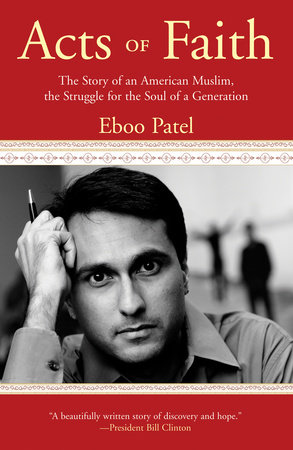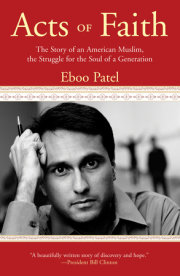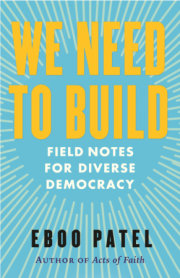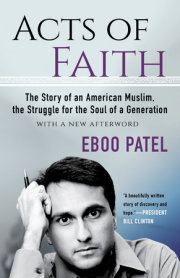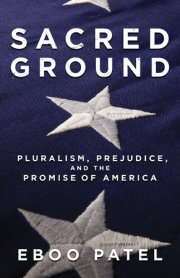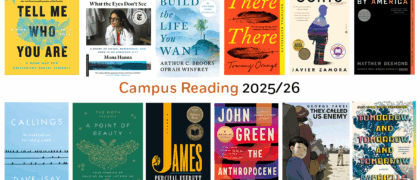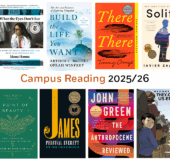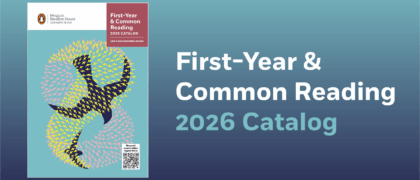Introduction: The Faith Line
Someone who doesn’t make flowers makes thorns.
If you’re not building rooms where wisdom can be
openly spoken, you’re building a prison.
shams of tabriz
Eric Rudolph is in court pleading guilty. But he is not sorry. Not for
the radio-controlled nail bomb that he detonated at New Woman
All Women Health Care in Birmingham, Alabama, that killed an
off-duty police officer and left a nurse hobbled and half-blind. Not
for the bomb at the 1996 Olympics in Atlanta that killed one, injured
dozens, and sent shock waves of fear through the global community.
Not for his hate-spitting letter stating, “We declare and will wage
total war on the ungodly communist regime in New York and your legislative
bureaucratic lackeys in Washington,” signed “the Army of
God.” Not for defiling the Holy Bible by writing “bomb” in the margin
of his copy.
In fact, Rudolph is proud and defiant. He lectures the judge on the
righteousness of his actions. He gloats as he recalls federal agents passing
within steps of his hiding place. He unabashedly states that abortion,
homosexuality, and all hints of “global socialism” still need to be
“ruthlessly opposed.” He does this in the name of Christianity, quotxi
ing from the New Testament: “I have fought the good fight, I have finished
my course, I have kept the faith.”
Felicia Sanderson lost her husband, Robert, a police officer, to
Rudolph’s Birmingham bomb. During the sentencing hearing, she
played a tape of speeches made at her husband’s funeral. People remembered
him keeping candy for children in his patrol car and raising
money to replace Christmas gifts for a family whose home had
been robbed. Felicia Sanderson pointed to Rudolph and told the
court, “He has been responsible for every tear my sons have shed.”
Judge C. Lynwood Smith sentenced Rudolph to two life terms,
compared him to the Nazis, and said that he was shocked at Rudolph’s
lack of remorse. But many others felt a twitch of pride.
Eric Rudolph might have been a loner, but he did not act alone.
He was produced by a movement and encouraged by a culture. In
the woods of western North Carolina, where Rudolph evaded federal
agents for five years, people cheered him on, helped him hide, made
T-shirts that said run rudolph run. The day he was finally caught, a
woman from the area was quoted as saying, “Rudolph’s a Christian and
I’m a Christian . . . Those are our values. These are our woods.”
Of all the information published about Rudolph, one sentence in
particular stood out to me: Rudolph wrote an essay denying the Holocaust
when he was in high school. How does a teenager come to hold
such a view?
The answer is simple: people taught him. Eric Rudolph had always
had trouble in school—fights, truancy. He never quite fit in. His father
died when he was young. His mother met and followed a series
of dangerous iconoclasts who preached a theology of hate. The first
was Tom Branham, who encouraged the Rudolph family to move next
door to him in Topton, North Carolina. Eric was soon drawing Nazi
symbols in his schoolbooks at nearby Nantahala High School. Next,
Eric’s mother moved the family to Schell City, Missouri, to be near
Dan Gayman, a leading figure in the extremist Christian Identity
movement. Gayman had been a high school principal and knew how
to make his mark on young people. He assumed a fatherly relationship
with Eric, enrolled him in Christian Identity youth programs, and
made sure he read the literature of the movement. Gayman taught
Eric that the Bible was the history of Aryan whites and that Jews were
the spawn of Satan and part of a tribe called the “the mud people.”
The world was nearing a final struggle between God’s people and Satan’s
servants, and it was up to the “conscious” Aryans to ensure victory
for the right race. Eric took to calling the television “the Electric
Jew.” He carved swastikas into his mother’s living room furniture.
His library included virulently anti-Semitic publications such as
The Protocols of the Learned Elders of Zion, Anne Frank’s Diary: A Hoax, and
The International Jew. Under the tutelage of Gayman and other radical
preachers, Eric Rudolph’s hate did what hate always does: it spread.
I imagine these preachers felt a surge of pride when Rudolph responded
to Judge Smith’s question about whether he set off the bomb
in Birmingham with a smug, “I certainly did.”
Middle school students in Whitwell, Tennessee, are giving tours of
one of the most profound Holocaust memorials anywhere in the
world: a German railcar that was used to transport Jews to Auschwitz.
The young people ask guests to imagine how it might feel to be one of
the seventy or eighty Jews packed into that tight space, hearing the
wheels clanking as the train took them to torture and death. They explain
that the railcar is filled with millions of paper clips, each one a
symbol of a Jew murdered by the Nazis. One student says that to see a
paper clip now is to think of a soul. The sign at the entrance of the
memorial reads: “We ask you to pause and reflect on the evil of intolerance
and hatred.” The sign on the way out states: “What can I do to
spread the message of love and tolerance these children have demonstrated
with this memorial?”
One Whitwell student tour guide, about to graduate from eighth
grade, reflects, “In the future, when I come back and see it, knowing
that I was here to do this, it will be not just a memory, but kind of like
in your heart, that you’ve changed the way that people think about
other people.”
Whitwell is a town of fewer than two thousand residents, located
outside Chattanooga in the coal mining region of southeastern Tennessee,
about a hundred miles from where the Ku Klux Klan was born.
It has two traffic lights and a whole lot of god bless america signs.
The mines closed thirty years ago, leaving the region even poorer than
it was before. You can count the number of black and Latino families
in Whitwell on two hands, and you won’t need any of those fingers
to count the number of Catholics, Jews, and Muslims, because there
aren’t any.
Why would white Protestant kids in a poor region with a history
of prejudice care so much about educating people about Judaism? The
answer is simple: people taught them. The principal of Whitwell Middle
School, Linda Hooper, wanted the students in her school to learn
about cultures and people who are different from themselves. “Our
children, they are respectful; they are thoughtful; they are caring. But
they are pretty much homogeneous. When we come up to someone
who is not like us, we don’t have a clue.”
She sent a teacher to a diversity conference, and he came back
with the idea of a Holocaust education project. “This was
our need,”
Hooper said.
Over the next several years, the students at Whitwell studied that
horrible time, met with Holocaust survivors, learned about the rich
tradition of Judaism, and taught all the people they touched about the
powerful role that young people can play in advocating for pluralism.
Lena Gitter, a ninety-five-year-old Holocaust survivor, heard
about the project and wrote the students a letter: “I witnessed what
intolerance and indifference can lead to. I am thankful that late in life
I can see and hear that the teaching of tolerance is alive and well and
bears fruit. When you ask the young, they will do the right thing.
With tears in my eyes, I bow my head before you. Shalom.”
Copyright © 2010 by Eboo Patel. All rights reserved. No part of this excerpt may be reproduced or reprinted without permission in writing from the publisher.

